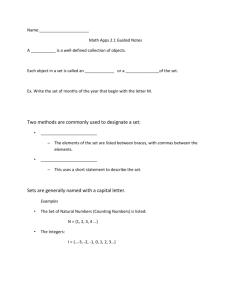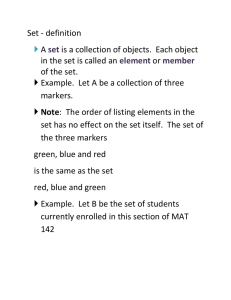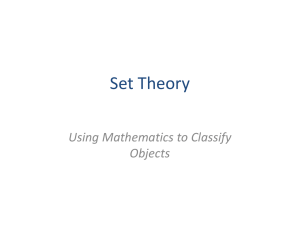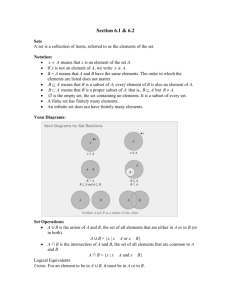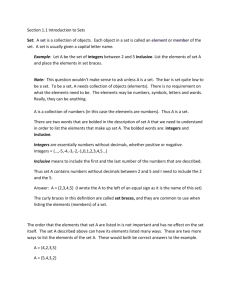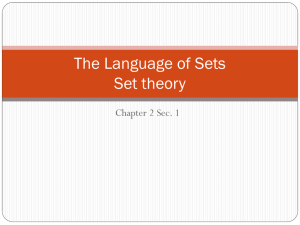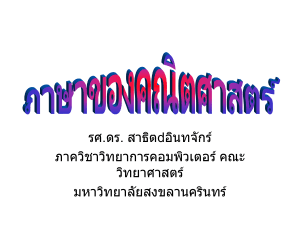Section 2.2
advertisement
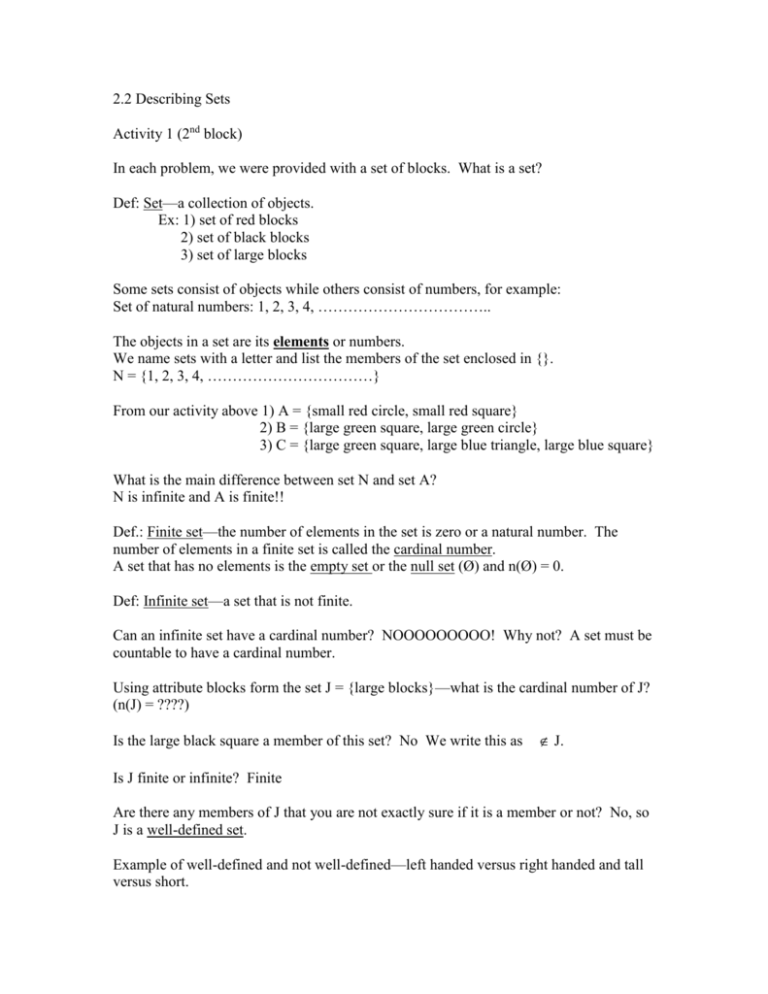
2.2 Describing Sets
Activity 1 (2nd block)
In each problem, we were provided with a set of blocks. What is a set?
Def: Set—a collection of objects.
Ex: 1) set of red blocks
2) set of black blocks
3) set of large blocks
Some sets consist of objects while others consist of numbers, for example:
Set of natural numbers: 1, 2, 3, 4, ……………………………..
The objects in a set are its elements or numbers.
We name sets with a letter and list the members of the set enclosed in {}.
N = {1, 2, 3, 4, ……………………………}
From our activity above 1) A = {small red circle, small red square}
2) B = {large green square, large green circle}
3) C = {large green square, large blue triangle, large blue square}
What is the main difference between set N and set A?
N is infinite and A is finite!!
Def.: Finite set—the number of elements in the set is zero or a natural number. The
number of elements in a finite set is called the cardinal number.
A set that has no elements is the empty set or the null set (Ø) and n(Ø) = 0.
Def: Infinite set—a set that is not finite.
Can an infinite set have a cardinal number? NOOOOOOOOO! Why not? A set must be
countable to have a cardinal number.
Using attribute blocks form the set J = {large blocks}—what is the cardinal number of J?
(n(J) = ????)
Is the large black square a member of this set? No We write this as
J.
Is J finite or infinite? Finite
Are there any members of J that you are not exactly sure if it is a member or not? No, so
J is a well-defined set.
Example of well-defined and not well-defined—left handed versus right handed and tall
versus short.
Def: Well-defined set—a set whose elements are clearly part of that set.
Example:
Let A = {1, 5, 8} B = { 1, 5, 8} and C = {3, 4, 5}
A = B (Equal sets)
A ≠ C (Unequal sets)
A C (Equivalent sets)
Equivalent sets have a one-to-one correspondence between them (e.g. they have the same
cardinal number)
Example:
Let K = {small blocks} and J = {large blocks}. Is J equivalent to K? Why?
Example:
Let L = {small blue blocks}. Are all blocks in L also in K? Yes—L is a subset of K (
L K)
Now, form another subset of K, call it M (M K).
What is a subset?
B is s subset of A (B A) if and only if every element of B is in A.
B is a proper subset of A (B A) if at least one element of A is not an element of
B.
Def.: Universal set—a set that contains all elements being considered.
Def.: Set complement—let the universal set, U, be our attribute blocks. If A = {white
blocks} then A = {not white blocks}.
Example:
Let B = {2, 3, 4}
List all the subsets of B
{2, 3, 4} B
{2, 3} B or
{2, 4} B or
{3, 4} B or
{2} B or
B
B
B
B
{3} B or B
{4} B or B
{ } B or B
Number of subsets of a set is 2 n .
